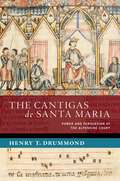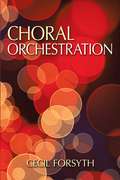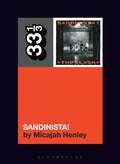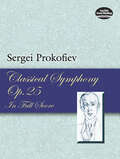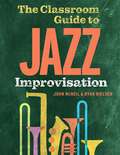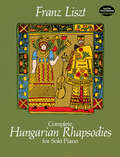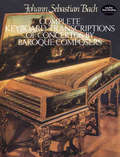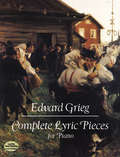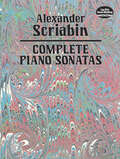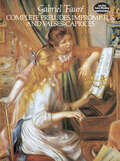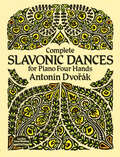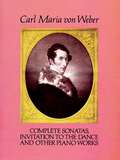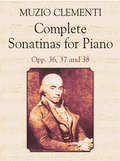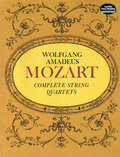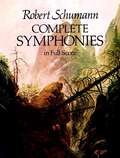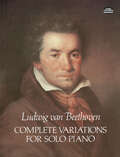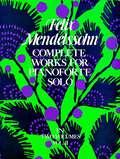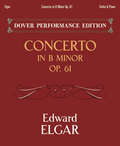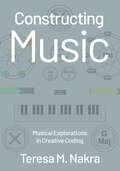- Table View
- List View
Byrd Studies in the Twenty-First Century (Clemson University Press: Studies in British Musical Cultures)
Byrd Studies in the Twenty-First Century demonstrates current approaches to Byrd studies in the twenty-first century and represents the sole major print effort to commemorate the 400th anniversary of the composer’s death in 2023. The volume's chapters, by both early-career and established scholars, cover topics that engage with Byrd’s milieu and music, incorporating themes such as reception history, exploration and exile, historiography, digital scholarship, literary criticism, and reconstruction. It also expands upon established areas of Byrd scholarship, including Byrd’s Catholicism, analysis, performance practice, and reformation politics, investigating how approaches to Byrd and his music have changed over since the last major anniversary in 1923. This timely volume not only marks the quatercentenary of a beloved English composer but works to situate scholarship on Byrd within the changing landscape of interdisciplinary music study. It includes contributions from scholars drawing widely from literary studies, visual culture, music theory, performance studies, and cultural history. Byrd's exceptional life at the heart of elite and courtly culture during tumultuous late-Elizabethan England is a unique window to late-sixteenth, early-seventeenth century England that will be of value to scholars and students from both within and without music studies. Byrd Studies in the Twenty-first Century provides new approaches and perspectives on Byrd's music, performance, and legacy.
The Cantigas de Santa Maria: Power and Persuasion at the Alfonsine Court (NEW CULTURAL HISTORY OF MUSIC SERIES)
by Henry T. DrummondAlfonso X (1221-84) ruled over the Crown of Castile from 1252 until his death. Known as "the Wise," he oversaw the production of a wealth of literature in his scriptorium. One of the most impressive of these literary outputs is the collection of songs known as the Cantigas de Santa Maria, which by most counts comprises 429 songs preserved in four manuscripts. The miracle songs (or cantigas de miragre) form the focus of this book. While the Cantigas have been the subject of much scholarly attention, only a handful of studies have looked at the repertory through an interdisciplinary lens. Fewer still have probed how the Cantigas use the power of song as a communicative medium, one that functions as a social tool within the erudite environment of the Alfonsine court. This book offers a new perspective to the song collection, probing how the Cantigas use their music and text, together with rhetorical devices, to communicate with their desired audience. Author Henry T. Drummond builds upon previous methodologies, adopting a novel and holistic assessment of the songs' melodies, poetic features, and narrative logic to assess a wide selection of songs. He presents a nuanced understanding of a song form that effectively conveys its narratives to its listeners via a diverse combination of tools, embracing medieval rhetoric, rhyme-based play, and song's inherent ludic potential. Such devices, Drummond argues, allow for the Cantigas to loom large as propaganda pieces, designed to dignify Alfonso X through an elaborately devised courtly ritual.
Cardi B's Invasion of Privacy (33 1/3)
by Ma’Chell M. DumaThe apex of critical praise and commercial success is a metric achieved by a select few. In 2020, Cardi B became synonymous with “record breaking” as her debut album Invasion of Privacy went five times platinum and became the longest charting record by a female rapper in history. From streaming and charting to views, likes, retweets, and shares, Cardi dominates. Cardi B's ascension to stardom is pure 21st century: from welfare kid to unapologetic stripper; reality TV persona, to social media maven, to a household name delivering one of the consummately executed albums in rap history, it's easy to imagine future critics noting popular music as before and after the rise of Cardi B.This in-depth look at Invasion of Privacy explores the sexual politics of hip hop through a track-by-track breakdown of the album. It addresses questions like: How does the wage gap impact pop music? Has Cardi destigmatized sex work for artists? What would hip hop look like as a matriarchy? Each chapter explores the musicality and social constructs that shape the album and a new movement in femme rap.
Caruso and Tetrazzini On the Art of Singing
by Luisa Tetrazzini Enrico CarusoTwo of opera's greatest names offer encouragement and useful advice to aspiring singers in this classic guide. Tenor Enrico Caruso and coloratura soprano Luisa Tetrazzini employ nontechnical terms to provide an informal vocalist's anatomy, with instructions for the proper training, care, and disposition of the tongue, lungs, diaphragm, mouth, and the voice itself.Tetrazzini deals with the foundations of singing in breath control; tone emission and attack; and, sending aspiring performers to the mirror, facial expression and dress. Caruso remarks on tone production; such faults as the "white voice" and "goat voice"; the necessity of good diction; the role of diet; and the part superstition plays in certain singers' performances. These consummate artists show great charm and presence as writers, and this little book is a great pleasure to read.
Choral Orchestration
by Cecil ForsythThis volume is geared toward organists seeking a brief, convenient guide to developing technical grounding for the scoring of compositions. Noted musicologist Cecil Forsyth takes readers bar by bar through a complete choral orchestration in this excellent and inexpensive tutorial. <p><p> Forsyth discusses general principles in terms of their application to everyday orchestral necessities. He further presents a complete composition and explores each note, forming a friendly critical conversation with readers. Together the author and reader examine the work's musical difficulties, balance the orchestral possibilities of each passage, and explore the details of orchestral execution. Pianists and composers as well as organists will appreciate this accessible and complete study of orchestration.
The Clash's Sandinista! (33 1/3)
by Micajah HenleyFollowing the success of their instantly iconic double LP, London Calling, The Clash set out to do something “triply outrageous.” Named after the Nicaraguan rebels who successfully overthrew an authoritarian dictator, Sandinista! consists of 36 songs across six sides of vinyl. Produced by the band, it showcases their politics as well as their ability to adopt a multitude of genres ranging from punk, reggae, jazz, gospel, calypso, and hip hop. Free from the influence of their Machiavellian manager, Bernie Rhodes, The Clash still battled their record label to release the triple LP on their terms: three for the price of one.Despite its polarizing reception from critics at the time of its release, Sandinista! is often considered one of the greatest albums of all time. Nevertheless, critics and fans have spent over 40 years debating whether the album would be better as a 12-track LP. This book entertains that idea and considers what is lost or gained in the process. To do so, the book delves into the politics of The Clash, the spliff bunkers constructed for the production of the album, and the sacrifices made upon its release. It examines the album's 36 tracks and considers the significance of the record's dissection on behalf of fans who curate their own versions of the album in the mixtape, CD, and playlist eras.
Classical Symphony, Opus 25: In Full Score
by Sergei ProkofievProkofiev's first symphony, which he mischievously dubbed "Classical," is a sprightly piece based on the symphonic models of Haydn. "I thought that if Haydn were alive today he would compose just as he did before, but at the same time would include something new in his manner of composition," Prokofiev remarked. "I wanted to compose such a symphony: a symphony in the classical style."The composer's synthesis of twentieth harmonies and timbres with eighteenth-century structure and form has captivated audiences since its premiere in 1918. This is Prokofiev's most frequently performed symphonic work, and this edition is meticulously reproduced from an authoritative early source.
The Classroom Guide to Jazz Improvisation
by John McNeil Ryan NielsenYou don't have to be a jazz expert to give your students a great introduction to improvisation. The Classroom Guide to Jazz Improvisation provides what music educators have sought for decades: an easy, step-by-step guide to teaching jazz improvisation in the music classroom. Offering classroom-tested lesson plans, authors John McNeil and Ryan Nielsen draw on their combined 54 years of teaching experience and extensive work as professional jazz musicians to remove the guesswork and mystique from the teaching process. Each lesson is founded in the authors' realization that the brain responds differently to improvisation than it does rote memory. The resulting lesson plans are flexible, easy to use, and equip students with a quick understanding of the simple choices they can make to create effective jazz lines. Lessons are designed for a range of settings, from ensemble rehearsal to private instruction. Music educators may find relief in the concrete, straightforward materials on rhythm section instruments like bass, drums, piano, and guitar. Beyond the nuts and bolts of improvisation, this book contains carefully curated listening lists, honest discussions about the meaning of the music, and talking points to advocate for jazz programs to administrators and parents. With an inviting and conversational approach, The Classroom Guide to Jazz Improvisation is an essential resource for all music educators, from early career teachers to seasoned instructors.
Closer than Ever: The Unique Six-Decade Songwriting Partnership of Richard Maltby Jr. and David Shire (Broadway Legacies)
by Joshua RosenblumHow do musical theater songs actually get written? What enables some composer and lyricist partnerships to last for decades? Composer David Shire and lyricist Richard Maltby, Jr., two of the most gifted songwriters of our time, are revered among musical theater lovers for their ground-breaking off-Broadway revues Starting Here, Starting Now and Closer Than Ever, as well as for the Broadway musicals Baby and Big. Rosenblum sets out to increase appreciation for Maltby and Shire's large and impressive body of work and establish their place in musical theater history. This book chronicles their sixty-six-year (and counting) partnership, giving full behind-the-scenes accounts of their musicals, interspersed with deep-dive analyses of standout individual numbers. Other well-known artistic figures who feature prominently in the Maltby/Shire story include Stephen Sondheim, Hal Prince, Michael Stewart, Francis Ford Coppola, Craig Lucas, Mike Ockrent, Susan Stroman, John Weidman, Charles Strouse, Garth Drabinsky, Adam Gopnik, Jason Robert Brown, and Jonathan Tunick. Using his experiences as a Broadway conductor, music journalist, and professor of musical theater composition, as well as his long-term personal and professional acquaintance with both Maltby and Shire, Joshua Rosenblum is uniquely suited to chronicle their lives, careers, and creative output. The songwriters, both of whom are engaging and articulate in describing what they do, are quoted liberally throughout the book in exclusive interviews, creating the impression that one is spending time with two inspiring creative artists who happen to be great company.
Coded Lyrics: The Poetics of Argentine Rock under Censorship and Beyond (Liverpool Latin American Studies #31)
by Mara FavorettoCoded Lyrics is the first comprehensive academic work dedicated to unraveling the lyrical intricacies of Argentine rock in the English language. This book redefines the narrative of rock history, shedding light on the distinctive journey undertaken by South American rock music amidst a unique set of contextual challenges, far removed from its English-speaking counterparts. Within this vibrant musical landscape, Argentine rock emerges as a shining example of cultural resistance in the region. Focusing intently on Argentina's tumultuous authoritarian decades and the post-dictatorship era, this book delves deep into the heart of the Argentine rock genre's lyrical content. It vividly portrays the ongoing struggle between the state and the public, where identity, language, and perception converge around the powerful medium of rock music. Coded Lyrics is not a conventional musicological study; instead, it serves as a meticulous exploration of language and culture. With captivating prose, the book unravels the genesis of Argentine rock, placing language at its epicentre. Through a thorough examination of rock lyrics, this work unveils the artful manipulation of language as a vehicle for resistance. It illuminates the unexpected consequences of censorship in Argentina, with Argentine rock lyrics standing as a compelling testament to the transformative power of art in the face of totalitarianism.
Complete Hungarian Rhapsodies for Solo Piano
by Franz LisztUnrivaled as a virtuoso pianist in his own day -- and perhaps still -- Franz Liszt was a composer of daring originality. He introduced new conceptions of harmony and melody and made radical innovations in piano technique. In a long and prolific career, he produced over 400 works for piano -- brilliant compositions with flashes of eloquence and energy that evoke a full, rich orchestral sound. Best known and best loved are the Hungarian Rhapsodies.Reproduced directly from an authoritative Russian edition of the composer's works, this inexpensive and sturdily bound volume presents the complete Hungarian Rhapsodies for solo piano: No. 1, in C-sharp Minor; No. 2, in C-sharp Minor; No. 3, in B-flat Major; No. 4, in E-flat Major; No. 5, in E Minor; No. 6, in D-flat Major; No. 7, in D Minor; No. 8, in F-sharp Minor; No. 9 (Pester Karneval; "Carnival in Pest"), in E-flat Major; No. 10, in E Major; No. 11, in A Minor; No. 12, in C-sharp Minor; No. 13, in A Minor; No. 14, in F Minor; No. 15, (Rákóczy March), in A Minor; No. 16, in A Minor; No. 17, in D Minor; No. 18, in C-sharp Minor; and No. 19, in D Minor.This edition features English translations of all headings and footnotes that originally appeared in Russian. Published in association with the American Liszt Society, this edition offers all the quality features musicians have long associated with Dover: clear reproduction of musical notation, ample space for analysis, notes, fingerings, etc. Classical pianists, students, teachers, and lovers of music will applaud this handsome volume for playing or study -- a convenient, affordable opportunity to explore some of the great masterpieces inspired by Hungarian gypsy music.
Complete Keyboard Transcriptions of Concertos by Baroque Composers (Dover Music For Piano Ser.)
by Johann Sebastian BachEarly in his career, Bach began to transcribe for the keyboard a number of concertos for violin, oboe, and other instruments by such baroque masters as Vivaldi and Telemann. His purpose: to study and explore the works of other composers as well as to supply good clavier music for his own performances.This collection of sixteen of these celebrated transcriptions is reprinted from the definitive Bach-Gesellschaft edition prepared by Ernst Naumann and presented in a study format designed to give amateur and professional pianists and harpsichordists a lifetime of pleasurable study and use.Six of these glorious keyboard works are known to be transcriptions of Vivaldi violin concertos. Three are based on concertos written by Duke Johann Ernst of Saxe-Weimar, the son of Bach's employer at Weimar. One is based on a violin concerto by Telemann, another on an oboe concerto by Alessandro Marcello, and another on a concerto by Benedetto Marcello. The sources of the remaining works are unknown.Vivaldi, whose music Bach probably first heard in 1712, was to provide a strong influence on the young composer. Bach would eventually assimilate the Italian's style and use it with his own contrapuntal heritage and the Northern idiom in creating what we recognize today as the typical Bach style. These transcriptions, which represent his introduction to the new idiom, richly display a dynamic virtuosity that makes their performance an exhilarating experience.
Complete Lyric Pieces for Piano (Dover Music For Piano Ser.)
by Edvard GriegBetween 1867 and 1901, Edvard Grieg (1843–1907) wrote ten sets of little mood pictures for piano that display his great musical gifts at their lyrical best. Charming works of elegant simplicity and warmth, they have become cornerstones of the piano repertoire, favorites of both amateur and professional musicians and their audiences.This authoritative edition presents all 66 of these piano jewels in one finely made yet inexpensive volume. Although technically uncomplicated and reasonably easy to master, the Lyric Pieces evoke with startling freshness a wide emotional range, often bringing into play the varied moods and idioms of Norwegian folk music, an evergreen source of Grieg's inspiration. They vary in mood from the serene sadness of "Berceuse" and the nostalgic yearning of "To Spring" to the fanciful "Elves' Dance" and the joyful "Wedding Day at Troldhaugen."In many passages, the music exhibits harmonies that were novel for the time — harmonies recognizably late-romantic in style, but clearly anticipating the impressionism of Debussy, Ravel, and others. Pianists at every level of accomplishment will find this volume of delightful and moving works, reprinted here from the original editions published by C. F. Peters of Leipzig, a perfect companion for hours of musical pleasure.
Complete Piano Sonatas
by Alexander ScriabinLike Chopin, Scriabin made the piano the focus of his art. Among the supreme achievements of that art are the ten sonatas he composed between 1892 and 1913, works that abundantly display both his technical virtuosity and the exhilarating emotional gamut he ranged with such individuality.All ten of Scriabin's sonatas are reprinted here from the authoritative Russian edition published in 1964. The first four reveal the influences of the pianism of Chopin and Liszt. The subsequent sonatas richly display Scriabin's emerging impressionist techniques and his deep attraction to mysticism, which progressively conjured a more and more ethereal framework of sound, now brooding and introspective, now rhapsodic and exultant.In both their technical requirements and their emotional demands, these brilliant works will offer pianists a deeply satisfying challenge. Nonpianists will also enjoy this finely made edition, with which they may follow, music in hand, the growing number of loved and recorded performances of these masterpieces.
Complete Preludes, Impromptus and Valses-Caprices
by Gabriel FauréGabriel Fauré (1845-1924) enriched the literature of the piano with freshly melodic, elegantly wrought compositions that embody the aristocratic qualities of the French tradition. This superbly produced volume brings together in one authoritative playing edition one of the most important segments of his works for piano: all of his nine Preludes, five Impromptus, and four Valses-Caprices.Each of these distinctive compositions, so often heard today in concert and recital halls around the world and frequently recorded by leading pianists, reveal Fauré's lyrical melodic gifts and innovative harmonies and the classical qualities of clarity, balance, and serenity characteristic of his work.Pianists of intermediate and advanced skills will find in these richly varied compositions -- unavailable elsewhere in one volume -- a unique opportunity to explore the elegant artistry of one of the most gifted and influential composers of the French school. Music lovers at every level of accomplishment will discover in this well-made, yet inexpensive edition a most satisfying way to savor fine music: to follow phrase by phrase, music in hand, a live or recorded performance.
Complete Slavonic Dances for Piano Four Hands
by Antonin DvorákThe two series of piano duets combined in this volume are among Dvořák's most famous compositions and among the most performed works in the piano four hands repertoire. The composer intended them as artistic stylizations of typical Slavonic dances such as the furiant, the dumka, the polka, the skočná, the odzemek, and the kolo.The first series of eight dances, Opus 46 (1878), is full of joy and vitality. The second set of eight dances, Opus 72 (1886), is slightly more somber and meditative. Both series will delight pianists with their exciting rhythms and fresh, highly individual invention. They are reprinted here from the authoritative Czechoslovakian editions of Dvořák's complete works.
Complete Sonatas, Invitation to the Dance and Other Piano Works
by Carl Maria WeberA virtuoso of the piano and a pioneer of musical Romanticism, Carl Maria von Wolfe (1786-1926) wrote piano music of elegance and grandeur enhanced with bravura technical effects that profoundly influenced later 19th-century piano music. This volume presents virtually all Weber's works for piano solo: the four piano sonatas -- Opus 24 in C Major (1812), Opus 39 in A-flat Minor (1816), Opus 49 in D Minor (1816), and Opus 70 in E Minor (1822) -- considered the core of his output; his most popular piano composition, Invitation to the Dance, a waltz later orchestrated by Berlioz and used for the celebrated ballet Le Spectre de la Rose; eight lively and engaging sets of variations; and the dazzling Momento Capriccioso, Grande Polonaise, Rondo Brillante, and Polacca Brillante. Pianists will enjoy exploring this richly varied collection of piano masterworks, reprinted from the authoritative edition published by C. F. Peters of Leipzig.
Complete Sonatinas for Piano: Opp. 36, 37 and 38 (Dover Music for Piano)
by Muzio ClementiOften regarded as the father of piano technique, Clementi was the first composer to achieve the fully matured piano sonata of the late Classic period. This edition includes all 12 of the splendid miniature sonatas — so-called sonatinas — that comprise Clementi's Opp. 36, 37, and 38. Musicians and music lovers will find in this authoritative edition a rich selection of music by an innovative and influential composer.
Complete String Quartets
by Wolfgang Amadeus MozartThis single volume contains all the string quartets of Mozart: the little-known early quartets in an Italianate manner composed between 1770 and 1773: the six quartets dedicated to Franz Josef Haydn (1782-85); the D Major Quartet (K.499) composed in 1786; and the last three quartets (1789-90) written for the King of Prussia. In addition to the 23 string quartets, the volume contains an alternate slow movement to the G Major Quartet, K. 156.The music is photographically reprinted from the Breitkopf & Härtel printed score, still considered the standard, authoritative edition for the Mozart quartets.Noteheads in this edition have been reproduced in a size large enough to be read easily from a music stand or the keyboard, and margins and spaces between staves are conveniently wide to permit written notes, harmonic analysis, fingerings, and running measure numbers. This edition is practical for study, reference, enjoyment -- virtually any use.
Complete Symphonies in Full Score
by Robert SchumannThis volume reproduces, complete and unabridged, the scores of all four symphonies of Johannes Brahms, from the Vienna Gesellschaft der Musikfreunde Edition edited by Hans Gál. Included are Symphony No. 2 in D Major, Op. 73; Symphony No. 3 in F Major, Op. 90; and Symphony No. 4 in E Minor, Op. 98. The English translation of the editor's preface was prepared specially for this Dover edition. Do not confuse this with a piano rendering; it is a full orchestral score. In addition to its obvious uses for study, this score is also an indispensable associate for a listener who wishes to appreciate the full orchestral richness of these works.
Complete Variations for Solo Piano
by Ludwig Van BeethovenThe piano music of Beethoven is an indispensable part of the repertoire of any serious pianist. Especially appealing are the variations, magnificent compositions second only to the sonatas and concertos in importance, and among the most recorded and performed music in the piano literature.This volume contains all 21 sets of Beethoven's solo piano variations, including the extremely popular Diabelli Variations, Op. 120, which, in the view of many critics, accomplished for the piano what Bach's Goldberg Variations did for the harpsichord. Also included are the perennially admired Thirty-two Variations in C Minor, the Eroica Variations, Op. 35, and a treasury of variations on themes by Dressler, Salieri, Süssmayr, Righini, and other composers.Reprinted from the authoritative Breitkopf & Härtel edition, this music manifests the prodigious invention and imagination the master brought to the variation form. Now the complete corpus of variations is available in this inexpensive reliable edition, ready to inspire and challenge pianists and music lovers.
Complete Works for Pianoforte Solo: Volume II
by Felix MendelssohnMendelssohn's complete works for pianoforte solo are now contained in this two-volume republication of the outstanding Breitkopf & Härtel edition. Included in Volume One are: "Capriccio in F-sharp Minor" (1825), "Sonata in E Major" (1826), Seven Characteristic Pieces," "Rondo Capriccioso in E Major" (1824), "Fantasy in F-sharp Minor" (1835), "Andante cantabile e Presto agitato in B Major" (1838), "Etude in F Minor" (1836), "Scherzo in B Minor," "Gondola Song in A Major" (1837), "Scherzo a Capriccio in F-sharp Minor," "Three Caprices" (1833-1835), "Six Preludes and Fugues" (1827-1837), "Variations Sérieuses in D Minor" (1841), "Six Pieces for Children" (c. 1842), "Variations in E-flat Major" (1841), and Variations in B-flat Major."Volume Two contains: "Three Predules" (1836), "Three Etudes" (1834-1838), "Sonata in G Minor" (1821), "Sonata in B-flat Major" (1827), "Album Leaf (Song Without Words) in E Minor," "Capriccio in E Major/Minor" (1837), "Perpetuum Mobile in C Major," "Prelude and Fugue in E Minor" (1827, 1841), "Two Pieces," and "Song Without Words" [48 pieces in 8 books].Noteheads have been reproduced in a size large enough to be read easily at the keyboard. Margins and spaces between staves are generous, permitting insertion of written notes, analysis, fingerings, running measure numbers, etc. For playing, study, or just listening to records, this work will be an admirable addition to your music library.
Concerto in B Minor Op. 61: with Separate Violin Part (Dover Chamber Music Scores Ser.)
by Edward ElgarOne of the most beloved pieces in the modern violin repertoire, the Concerto in B Minor is among Edward Elgar's longest orchestral compositions and one of the last of his works to achieve and retain popular success. This practice and performance edition contains a piano reduction and a separate violin part.Famed violinist Fritz Kreisler pronounced Elgar the greatest living composer, placing him "on an equal footing with my idols, Beethoven and Brahms. He is of the same aristocratic family. His invention, his orchestration, his harmony, his grandeur—it is wonderful. I wish Elgar would write something for the violin." A commission from the Royal Philharmonic Society helped fulfill Kreisler's wish, and the violinist performed the Concerto in B Minor at its 1910 debut, with Elgar conducting the London Symphony Orchestra.
Constructing Music: Musical Explorations in Creative Coding
by Teresa M. NakraWhy does music exert such a strong pull on us? How does it work? Traditional courses in music fundamentals give students a basic understanding of the building blocks of music and how to put them together to make a result that produces an intended effect. Constructing Music: Musical Explorations in Creative Coding takes students a step further: through a series of step-by-step tutorials and lessons, author Teresa M. Nakra presents a new method for teaching music fundamentals that foregrounds creative coding practices and builds upon the computing skills that today's students already possess. By encouraging experimentation with computer code, this book gives students tools to actively investigate, simulate, and engage with the structure of music, ultimately leading to greater understanding about the processes that underlie music's power over us. Designed to support computer-based learning in tonal harmony, musicianship, and music theory, Constructing Music avoids the lens of Western music notation and instead explains music content through analogies with toy bricks and references ideas from creative technology, engineering, and design. Students also engage directly with the components of musical structure using editable short code "patches" developed in Max, a visual coding environment for interactive music, audio, and media. Dozens of patches accompany the book and allow readers to play with the building blocks of sound, reinforcing each topic by tinkering, modifying, and creating their own versions of the material. Each chapter explains core music theory concepts in detail and supports every description through code simulations, progressing through the topics with increasing complexity. In the final chapter, Nakra explores the questions and theories that emerge from the lessons, considering the role of music as a proto-form of AI and its impacts on emotion, wellness, and creativity.

